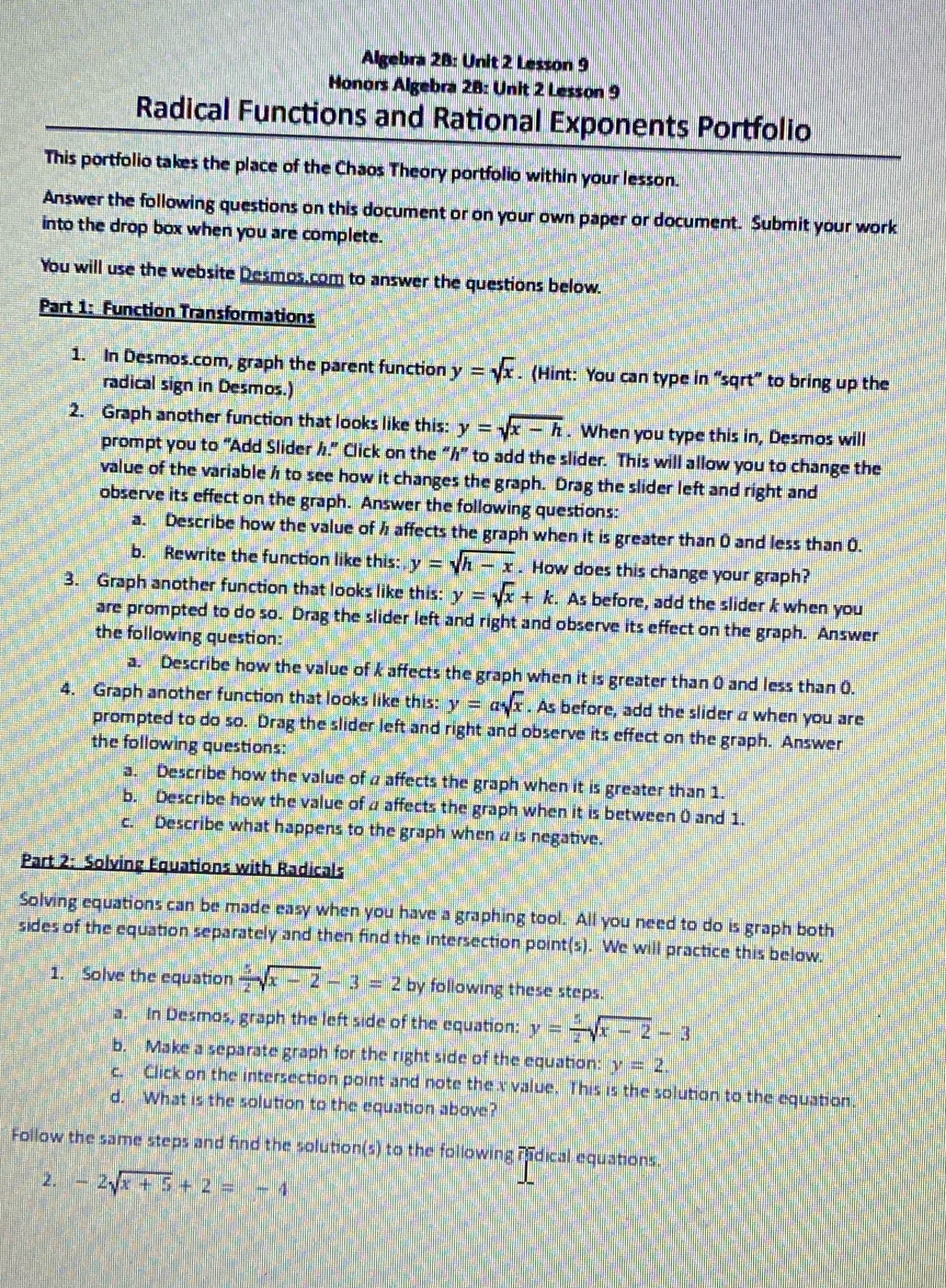Algebra 28: Unit 2 Lesson 9 Honors Algebra 28: Unit 2 Lesson ? Radical Functions and Rational Exponents Portfolio This portfolio takes the place of the Chaos Theory portfolio within your lesson. Answer the following questions on this document or on your own paper or document. Submit your work into the drop box when you are complete. You will use the website Desmos.com to answer the questions below. Part 1: Function Transformations 1. In Desmos.com, graph the parent function y = 1/x. (Hint: You can type in "sqr" to bring up the radical sign in Desmos.) 2. Graph another function that looks like this: y = vox - h . When you type this in, Desmos will prompt you to "Add Slider /." Click on the "/" to add the slider. This will allow you to change the value of the variable h to see how it changes the graph. Drag the slider left and right and observe its effect on the graph. Answer the following questions: a. Describe how the value of h affects the graph when it is greater than 0 and less than 0. b. Rewrite the function like this:y = 1h - x . How does this change your graph? 3. Graph another function that looks like this: y = vx + k. As before, add the slider * when you are prompted to do so. Drag the slider left and right and observe its effect on the graph. Answer the following question: a. Describe how the value of & affects the graph when it is greater than 0 and less than 0. Graph another function that looks like this: y = ave . As before, add the slider a when you are prompted to do so. Drag the slider left and right and observe its effect on the graph. Answer the following questions: a. . Describe how the value of a affects the graph when it is greater than 1. b. Describe how the value of a affects the graph when it is between 0 and 1. c. Describe what happens to the graph when a is negative. Part 2: Solving Equations with Radicals Solving equations can be made easy when you have a graphing tool. All you need to do is graph both sides of the equation separately and then find the intersection point(s). We will practice this below. 1. Solve the equation - 2 - 2 - 3 = 2 by following these steps. a.jin Desmos, graph the left side of the equation: y = =x - 2 - 3 b. Make a separate graph for the right side of the equation: y = 2. c. Click on the intersection point and note the s value. This is the solution to the equation d. What is the solution to the equation above? Follow the same steps and find the solution(s) to the following judical equations 2







